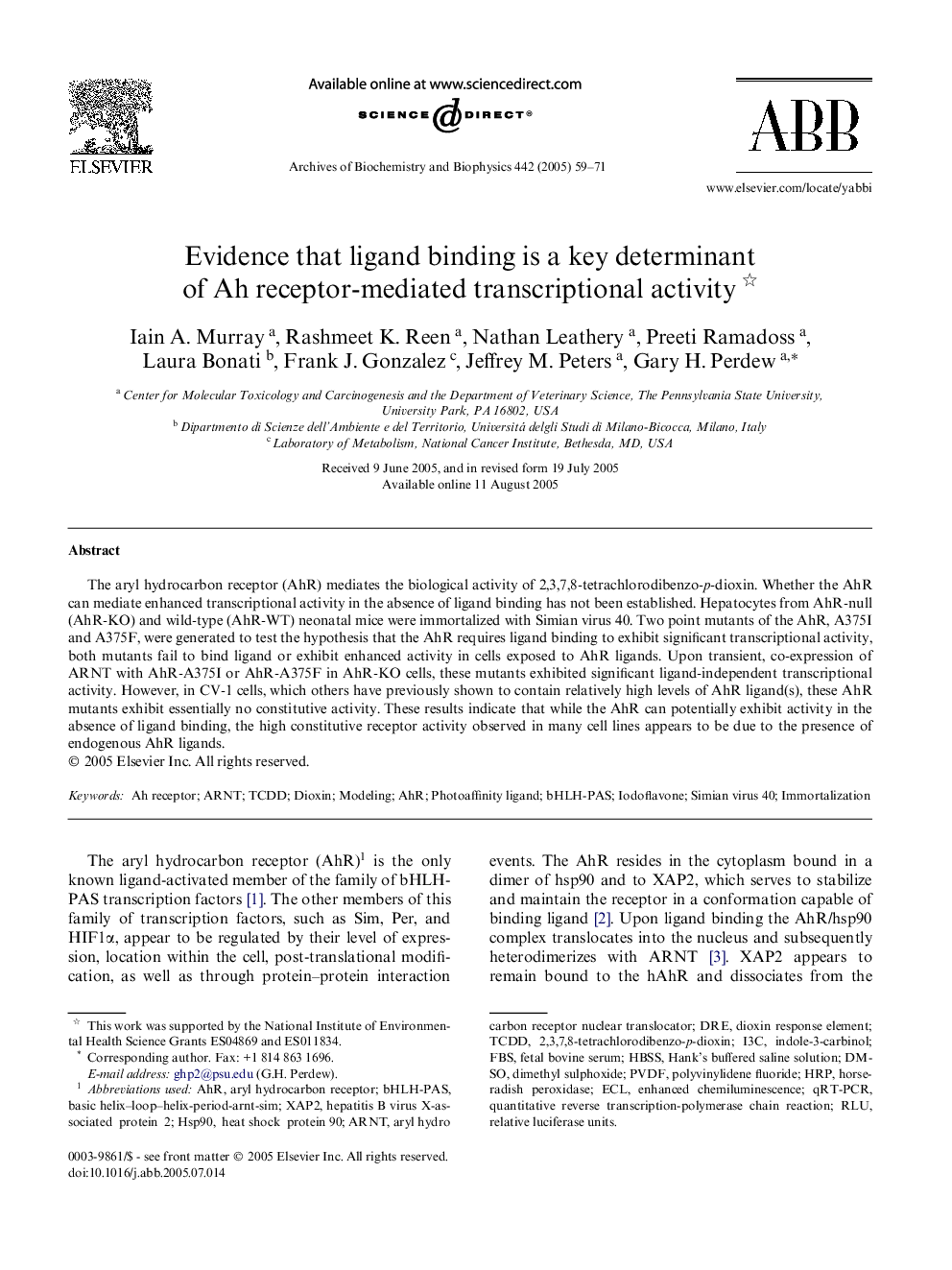| Article ID | Journal | Published Year | Pages | File Type |
|---|---|---|---|---|
| 9882110 | Archives of Biochemistry and Biophysics | 2005 | 13 Pages |
Abstract
The aryl hydrocarbon receptor (AhR) mediates the biological activity of 2,3,7,8-tetrachlorodibenzo-p-dioxin. Whether the AhR can mediate enhanced transcriptional activity in the absence of ligand binding has not been established. Hepatocytes from AhR-null (AhR-KO) and wild-type (AhR-WT) neonatal mice were immortalized with Simian virus 40. Two point mutants of the AhR, A375I and A375F, were generated to test the hypothesis that the AhR requires ligand binding to exhibit significant transcriptional activity, both mutants fail to bind ligand or exhibit enhanced activity in cells exposed to AhR ligands. Upon transient, co-expression of ARNT with AhR-A375I or AhR-A375F in AhR-KO cells, these mutants exhibited significant ligand-independent transcriptional activity. However, in CV-1 cells, which others have previously shown to contain relatively high levels of AhR ligand(s), these AhR mutants exhibit essentially no constitutive activity. These results indicate that while the AhR can potentially exhibit activity in the absence of ligand binding, the high constitutive receptor activity observed in many cell lines appears to be due to the presence of endogenous AhR ligands.
Related Topics
Life Sciences
Biochemistry, Genetics and Molecular Biology
Biochemistry
Authors
Iain A. Murray, Rashmeet K. Reen, Nathan Leathery, Preeti Ramadoss, Laura Bonati, Frank J. Gonzalez, Jeffrey M. Peters, Gary H. Perdew,
